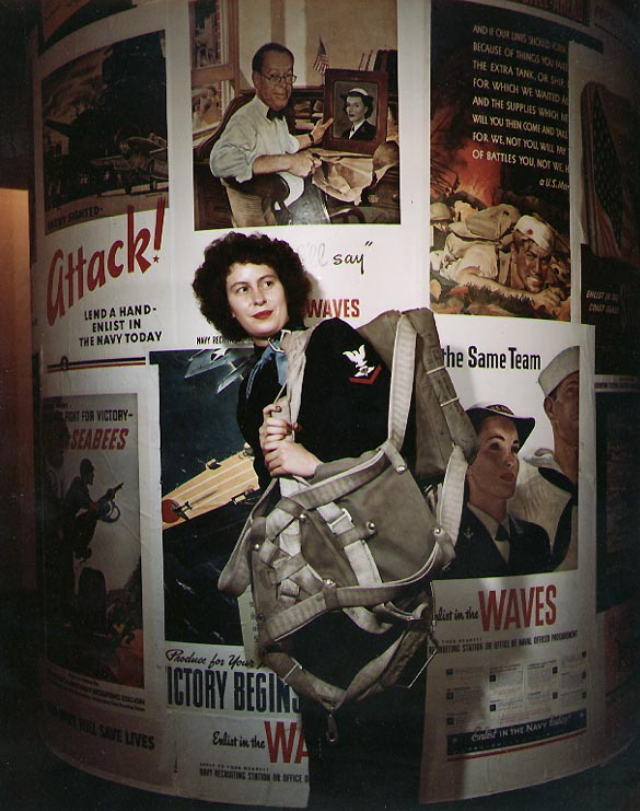The rate of Parachute Rigger was absolutely vital to the safety of the wartime Navy’s tens of thousands of pilots and aircrewmen. WAVES (for Women Accepted for Volunteer Emergency Service) were trained for this function at Lakehurst, New Jersey, and subsequently stationed at a great many Naval Air Stations. In the service’s early innocence concerning women’s aptitudes, there had apparently been an belief that WAVES would be “naturals” in this function, since the sewing machine was one of its inherent tools. Though it was found that ninety percent of women recruits did not know how to use a sewing machine, this discovery did not hinder the training of WAVES as parachute riggers and their subsequent success in the job.
One problem that was successfully addressed concerned the ability of shorter women to work at the standard height parachute packing table. The Naval Aircraft Factory speedily developed higher-leverage parachute pack closing jigs that proved useful to male Parachute Riggers as well as to the intended users.
In addition to the work of inspecting, mending, packing and airing their silken charges, parachute riggers also made and repaired a variety of other fabric goods for Naval use. One of the job’s qualifications, a jump from a plane using a parachute packed by the user, was prohibited for WAVES. However, after further experience, these jumps were made optional for women parachute riggers.


















0 comments:
Post a Comment